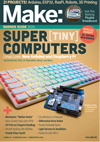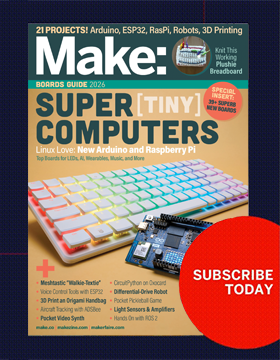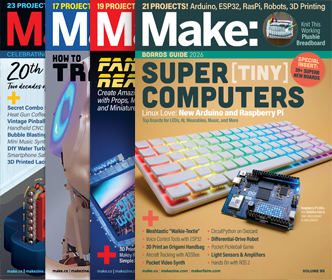
Stitched Sketchbook
WHAT WILL YOU MAKE?
A sewn together sketchbook to keep your drawings, notes, or anything you want.
WHAT WILL YOU LEARN?
You will learn to measure carefully to create holes for a book binding. Then you will learn to stitch the book binding with twine or thread.
STEPS
STEP 1
Prepare your paper.
STEP 2
Make some holes
STEP 3
Stitch!
WHAT'S NEXT?
Now you have a handy, sewn sketchbook or notebook you can fill up with drawings, jokes, or whatever you feel like. Make some for your friends and family as well!
Materials:
- 4-5 Sheets of Paper
- 1 Piece of Thicker Paper or Light Cardboard
- Awl
- Large-eyed Needle
- Thin Twine, Embroidery Floss, or Quilting Thread
- Scissors
- Ruler
- Pen or Pencil
See More Projects in these topics:
Arts & Crafts Paper CraftsSee More Projects from these themes:
Art/Craft StudioMaker Camp
Please Note
Your safety is your own responsibility, including proper use of equipment and safety gear, and determining whether you have adequate skill and experience. Power tools, electricity, and other resources used for these projects are dangerous, unless used properly and with adequate precautions, including safety gear and adult supervision. Some illustrative photos do not depict safety precautions or equipment, in order to show the project steps more clearly. Use of the instructions and suggestions found in Maker Camp is at your own risk. Make Community, LLC, disclaims all responsibility for any resulting damage, injury, or expense.
Maker Camp Project Standards
Based on NGSS (Next Generation Science Standards)
National Core Arts Standards
The National Core Arts Standards are a process that guides educators in providing a unified quality arts education for students in Pre-K through high school. These standards provide goals for Dance, Media Arts, Music, Theatre, and Visual Arts with cross-cutting anchors in Creating, Performing, Responding, and Connecting through art. The Anchor Standards include:- Generate and conceptualize artistic ideas and work.
- Organize and develop artistic ideas and work.
- Refine and complete artistic work.
- Select, analyze, and interpret artistic work for presentation.
- Develop and refine artistic techniques and work for presentation.
- Convey meaning through the presentation of artistic work.
- Perceive and analyze artistic work.
- Interpret intent and meaning in artistic work.
- Apply criteria to evaluate artistic work.
- Synthesize and relate knowledge and personal experiences to make art.
- Relate artistic ideas and works with societal, cultural, and historical context to deepen understanding.
National Core Arts Standards
The National Core Arts Standards are a process that guides educators in providing a unified quality arts education for students in Pre-K through high school. Also see Standards with cross-cutting anchors in Creating, Performing, Responding, and Connecting through art for Visual Arts.NGSS K-2 Engineering Design
The Next Generation Science Standards (NGSS) are K–12 science content standards.- K-2-ETS1-1. Ask questions, make observations, and gather information about a situation people want to change to define a simple problem that can be solved through the development of a new or improved object or tool.
- K-2-ETS1-2. Develop a simple sketch, drawing, or physical model to illustrate how the shape of an object helps it function as needed to solve a given problem.
- K-2-ETS1-3. Analyze data from tests of two objects designed to solve the same problem to compare the strengths and weaknesses of how each performs.
NGSS 3-5.Engineering Design
The Next Generation Science Standards (NGSS) are K–12 science content standards.- 3-5-ETS1-1. Define a simple design problem reflecting a need or a want that includes specified criteria for success and constraints on materials, time, or cost.
- 3-5-ETS1-2. Generate and compare multiple possible solutions to a problem based on how well each is likely to meet the criteria and constraints of the problem.
- 3-5-ETS1-3. Plan and carry out fair tests in which variables are controlled and failure points are considered to identify aspects of a model or prototype that can be improved.
ALL DONE? SHARE IT!
Share pictures and videos of your cool build! Be sure to use #maketogether or #makercamp
POST YOUR PROJECTS


